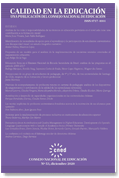Actions for the implementation of inclusive processes in higher education institutions
DOI:
https://doi.org/10.31619/caledu.n53.832Keywords:
Inclusion, Disability, Right to EducationAbstract
In our country, access to higher education is governed by laws and decrees that regulate inclusion procedures, but do not provide specific guidelines on how to carry it out. This study seeks to reveal the main actions for the admission and maintenance of students with disabilities in higher education. For this purpose, a qualitative investigation was carried out, based on intentional sampling and semi-structured interviews with the participation of 8 higher education national institutions. For analyzing of information, the Grounded Theory technique was used. The results were organized into three levels of analysis: First, to describe admission processes, programs to support inclusion and accessibility; second, to analyze the efficiency of inclusion programs; and finally, to carry out a global analysis, categorizing barriers or facilitators for inclusion. The results allowed to conclude that, despite the advances in the matter, higher education institutions are still required to promote institutional policies that affect the educational community in order to change the inclusive paradigm, and to institutionalize supports, considering that there is no single formula, since the supports depend on the culture of each institution.
Downloads
Published
Issue
Section
License
Authors retain their Copyright and only transfer a part of these to the journal, accepting the following conditions:
Authors keep their rights as authors and guarantee the right to the journal for the first publication of their work, which is simultaneously subject to the Creative Commons Attribution license allowing third parties to share the study accrediting the author and first publication in this journal.
Authors may adopt other non-exclusive license agreements for distribution of the version of the published work (e.g. inclusion in an institutional thematic file or publication in a monographic volume) accrediting initial publication in this journal.
Authors are allowed and recommended to share their work over the Internet (e.g. in institutional telematic files or their website) before and during the submission process, which may lead to interesting exchanges and increased citation of the published work. (See The effect of open access).

